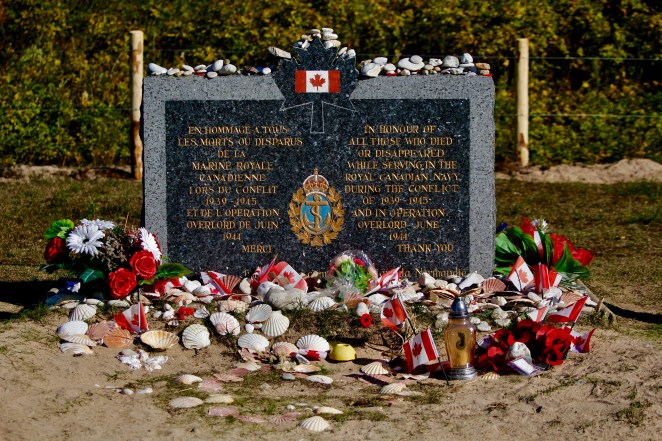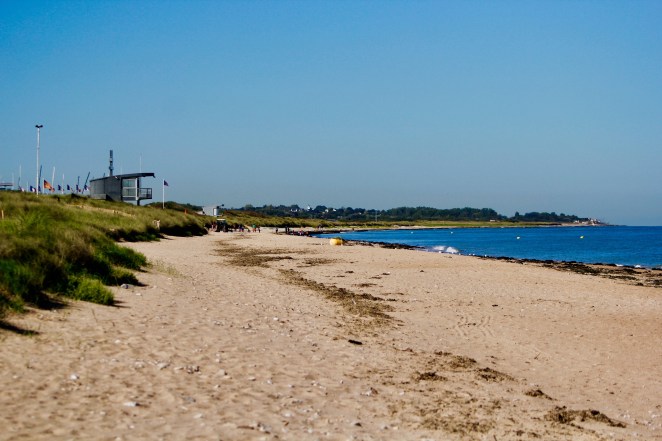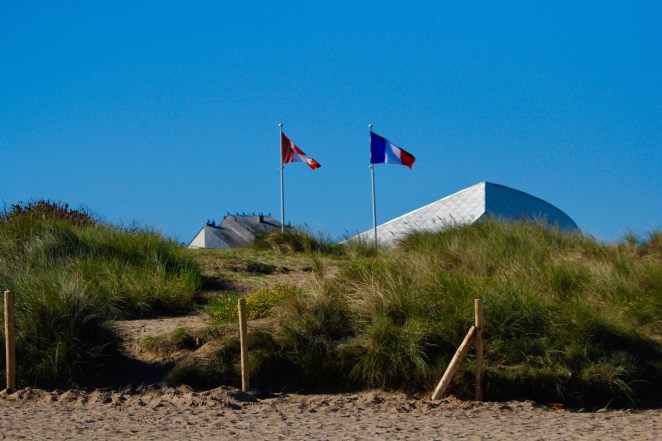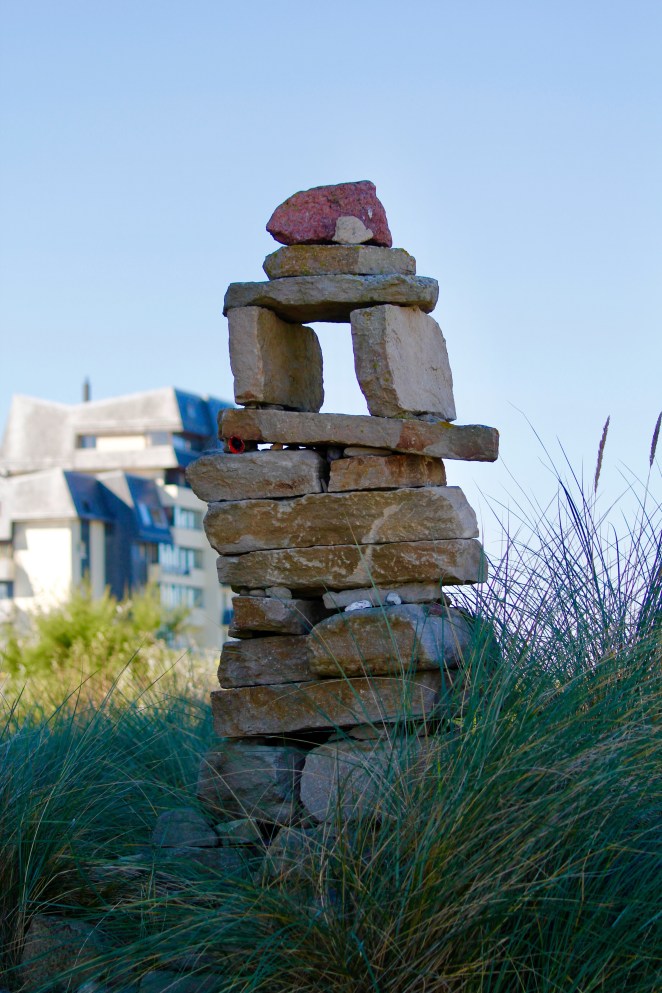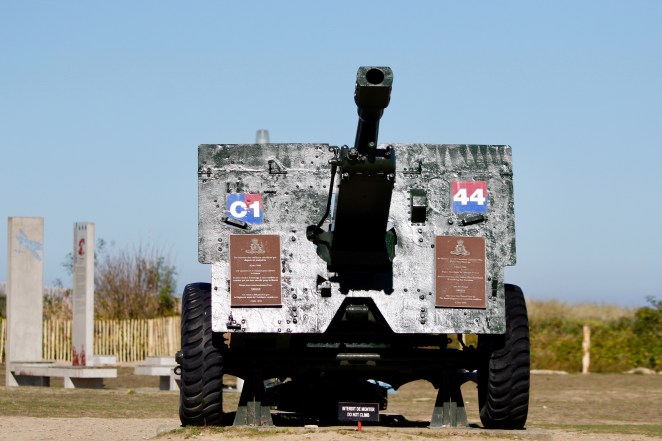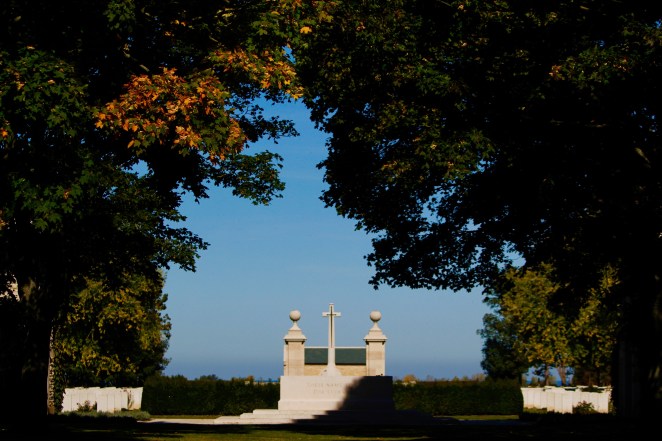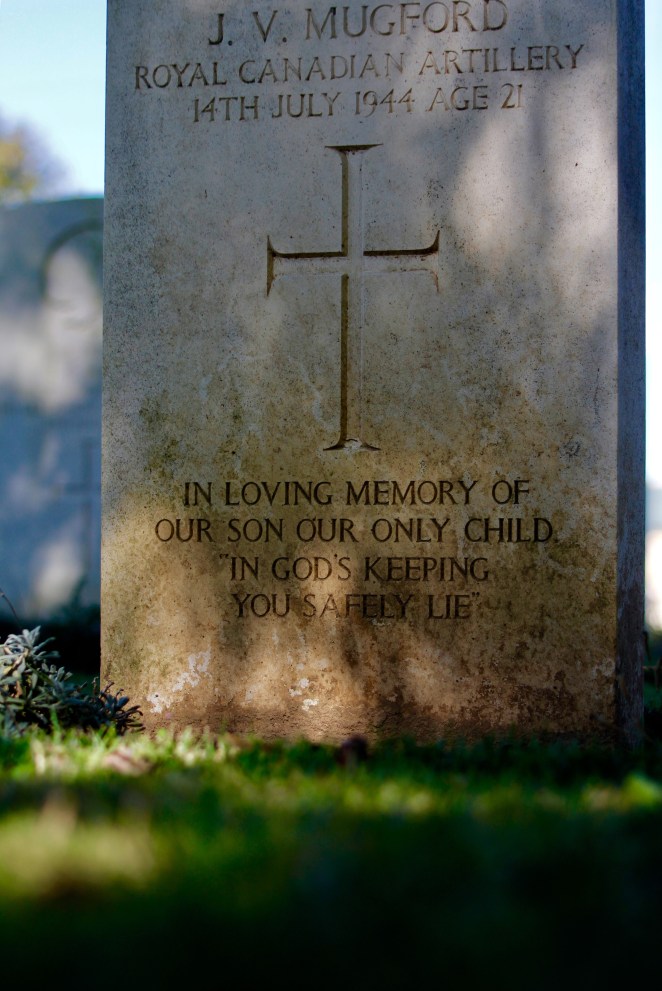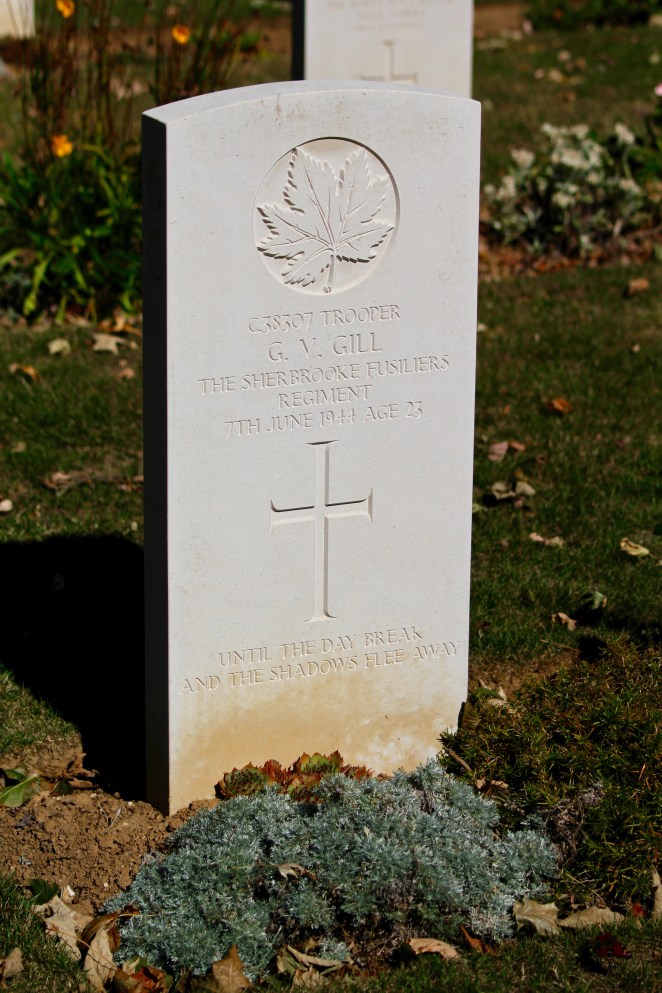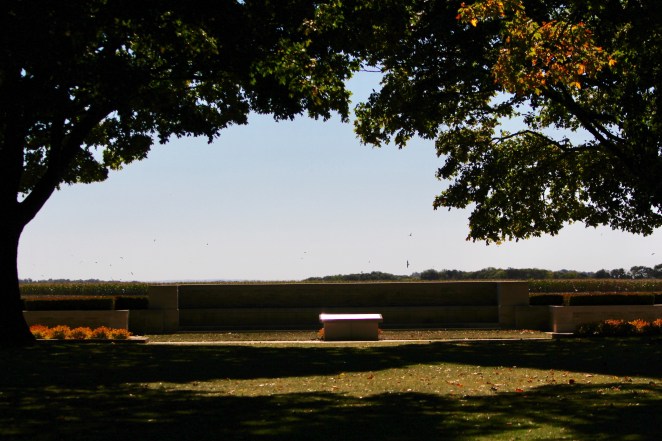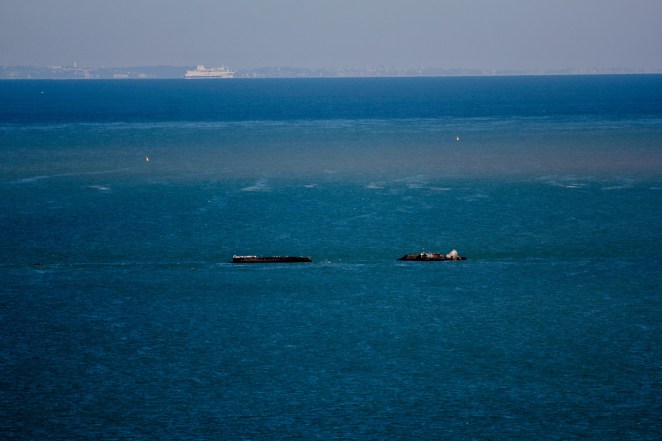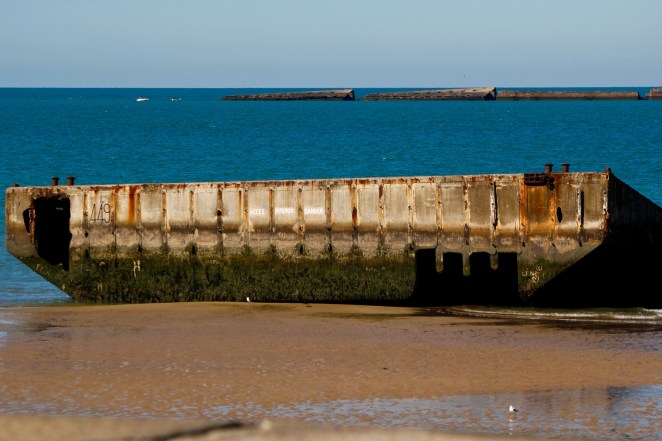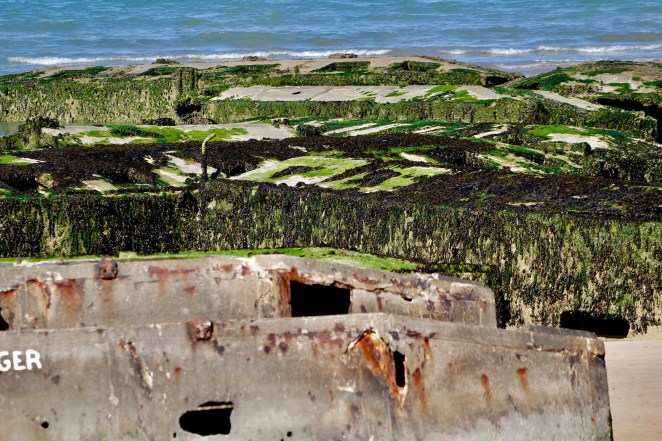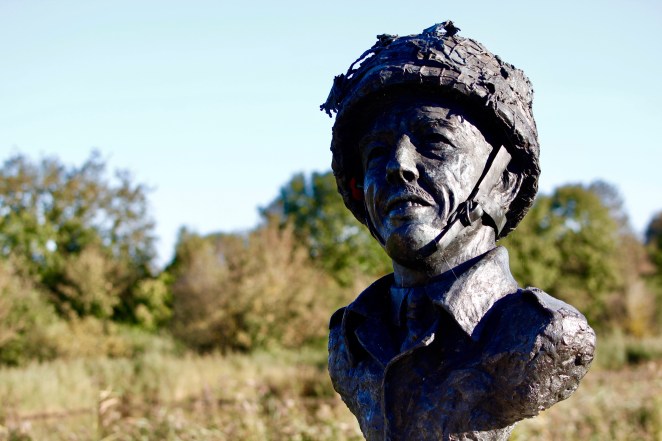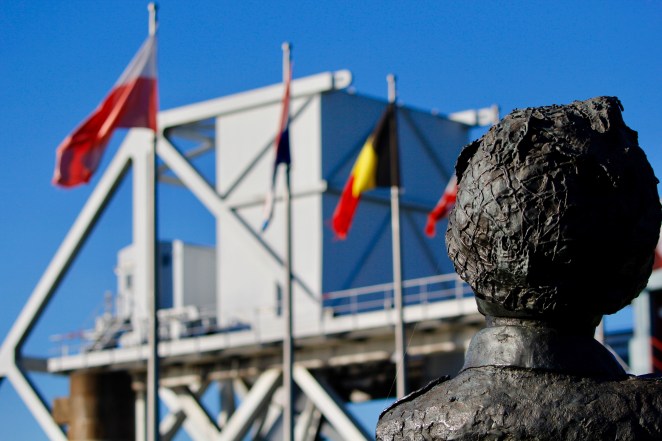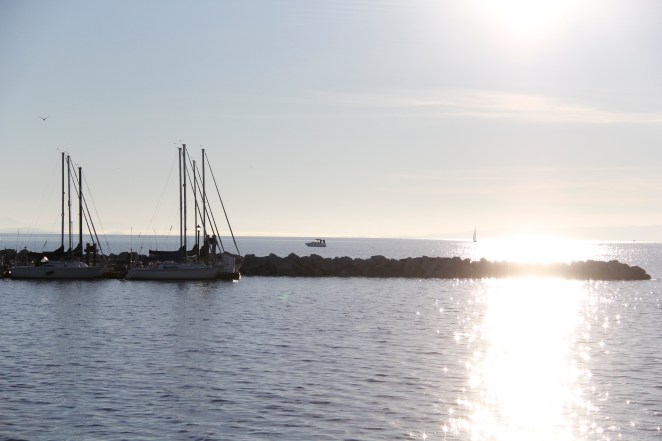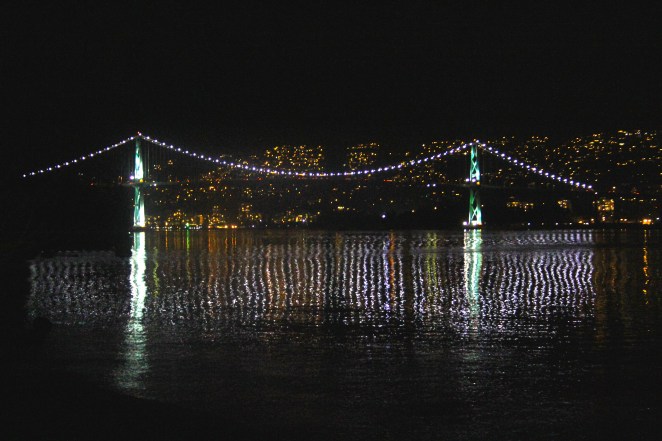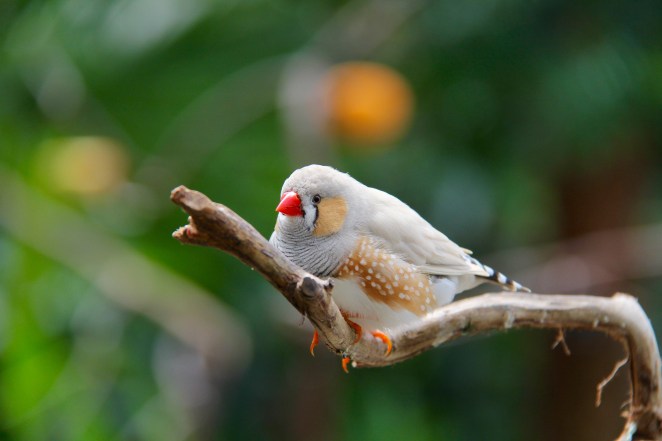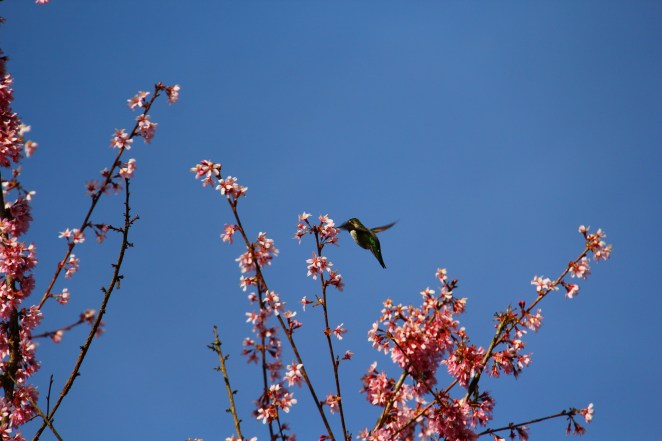Today we were up, breakfasted and out the door at a decent time to head back into France (technically, Canadian soil) for a couple more things to see – Vimy Ridge and Beaumont-Hamel Newfoundland Memorial.
The Vimy Ridge Memorial is an hour out of Poelkapelle, and as you drive through the nearby town of Givenchy-en-Gohelle, you can see the two white columns poking from behind the the trees on the hill.
We parked in the memorial’s lot and walked up to the limestone monument.
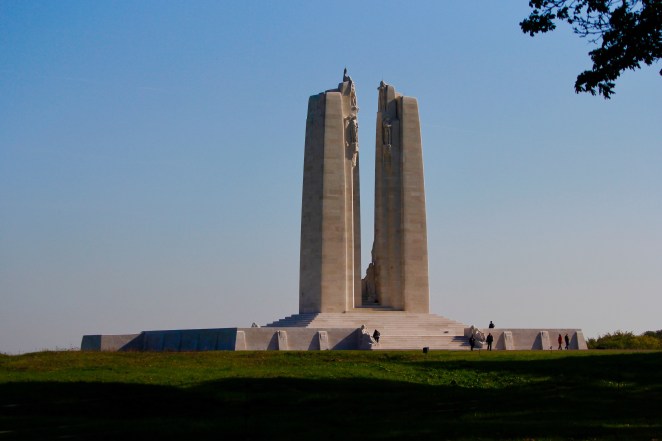
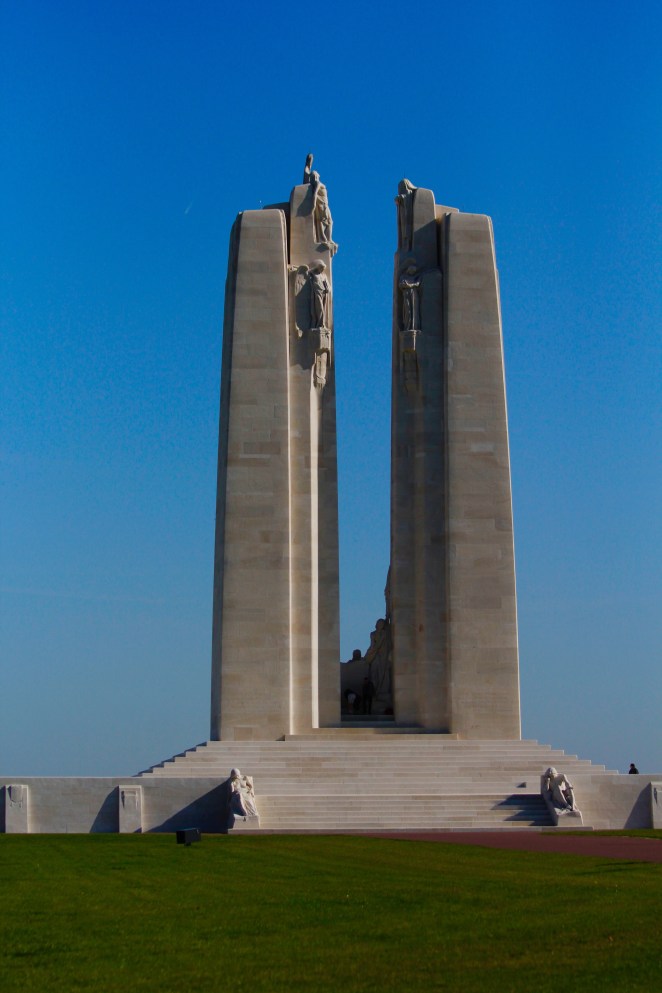



The monument itself was designed by Walter Seymour Allward and built out of white limestone from the Adriatic. There are 2 tall pillars sculpted with 20 human figures which personify things like “Peace” and “Justice”. The focal point is a woman draped in a cloak, looking mournfully down at a tomb. This is “Canada Bereft” or “Mother Canada”, mourning the generation lost.

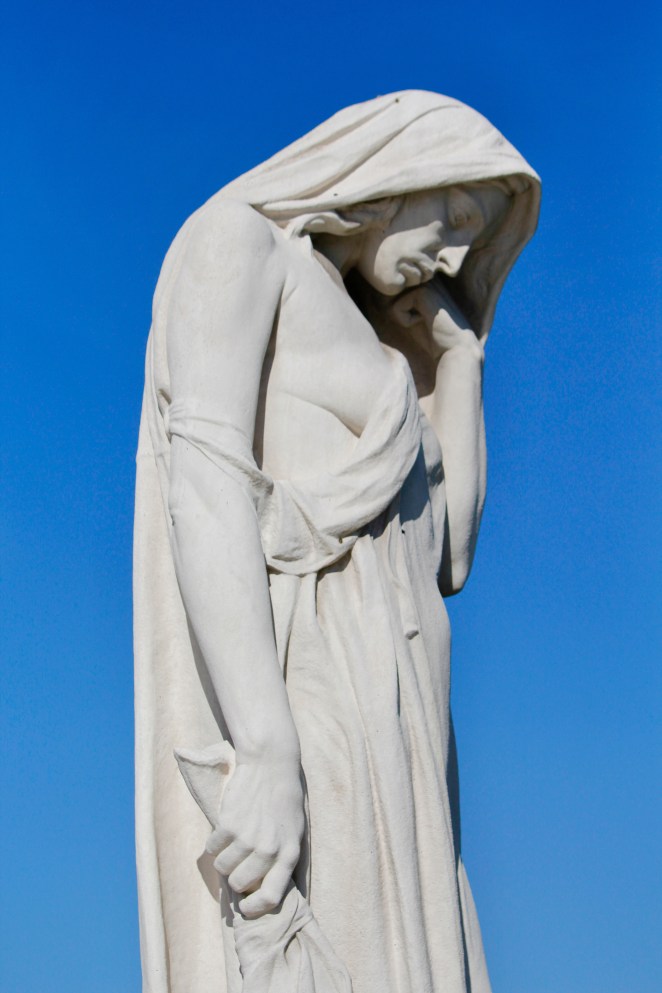


Also inscribed around the whole monument are the names of 11,169 Canadian soldiers who fought in France and have no know grave. I found some last names of people I know (no one from our family, as we probably weren’t even Canadian citizens yet).







Although the Battle of Vimy wasn’t a huge battle, it carried some strategic significance (as we saw standing on the hill, you and see everything around you for miles), but it was very significant for Canadian identity and presence on the world stage. Vimy was the first time that all 4 divisions of the Canadian Corps worked and coordinated together and was completely planned by Canadians. They also successfully demonstrated new tactics and techniques that helped them win the hill. By the end of the Battle of Vimy Ridge, 3,598 Canadians did not make it out.
After paying our respects at the monument, we walked over to the interpretive centre and trenches and tunnels. You can still walk around the trenches, and there are Canadian student volunteers around who will answer any questions.






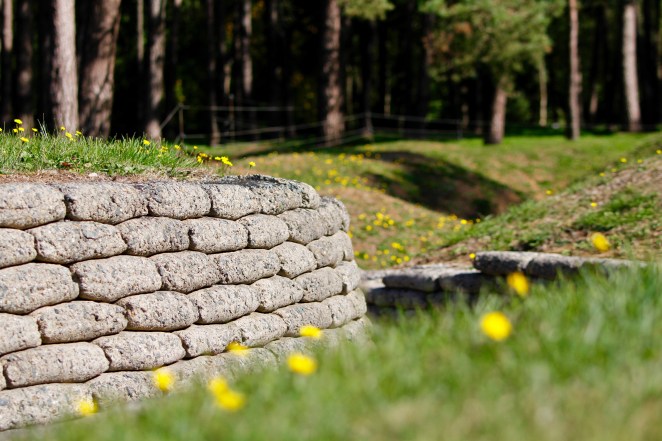

After finishing up in the trenches, we walked back to the car, ate our picnic lunch and headed to another French site that I wanted to see – Beaumont-Hamel Newfoundland Memorial. The site is 45 minutes south west of Vimy, and along the poppy-lined country roads were many many war cemeteries, mostly British.
The reason I wanted to go to Beaumont-Hamel is because my sister had gone a few years ago and told me the story and I remember having a very visceral reaction – on the first day of the Battle of the Somme in 1916, along with other battalions the Royal Newfoundland Regiment went over the top of the trenches after heavy bombardment against the Germans, expecting very little return fire from what they thought would be a decimated German line. What they didn’t know was the the Germans had dug deep into the hill side and were almost totally unaffected by the bombardment, so when the Allies went over, it was an absolute massacre. Most Newfoundlander casualties occurred within the first 15 minutes of the fighting. Of the 780 Royal Newfoundlanders who went over, only 68 were there for roll call the next morning.
To honour the brave Regiment, a bronze caribou was erected on the battlefield, along with plants and flowers native to Newfoundland and a plaque commemorating the dead.


The caribou is the insignia for the Royal Newfoundland Regiment, and this one is pointing in the direction of where the chlorine gas came from.
We admired the Caribou for a while then decided it was a pretty heavy day and time to head back to Poelkapelle, saying goodbye to France for the last time.



